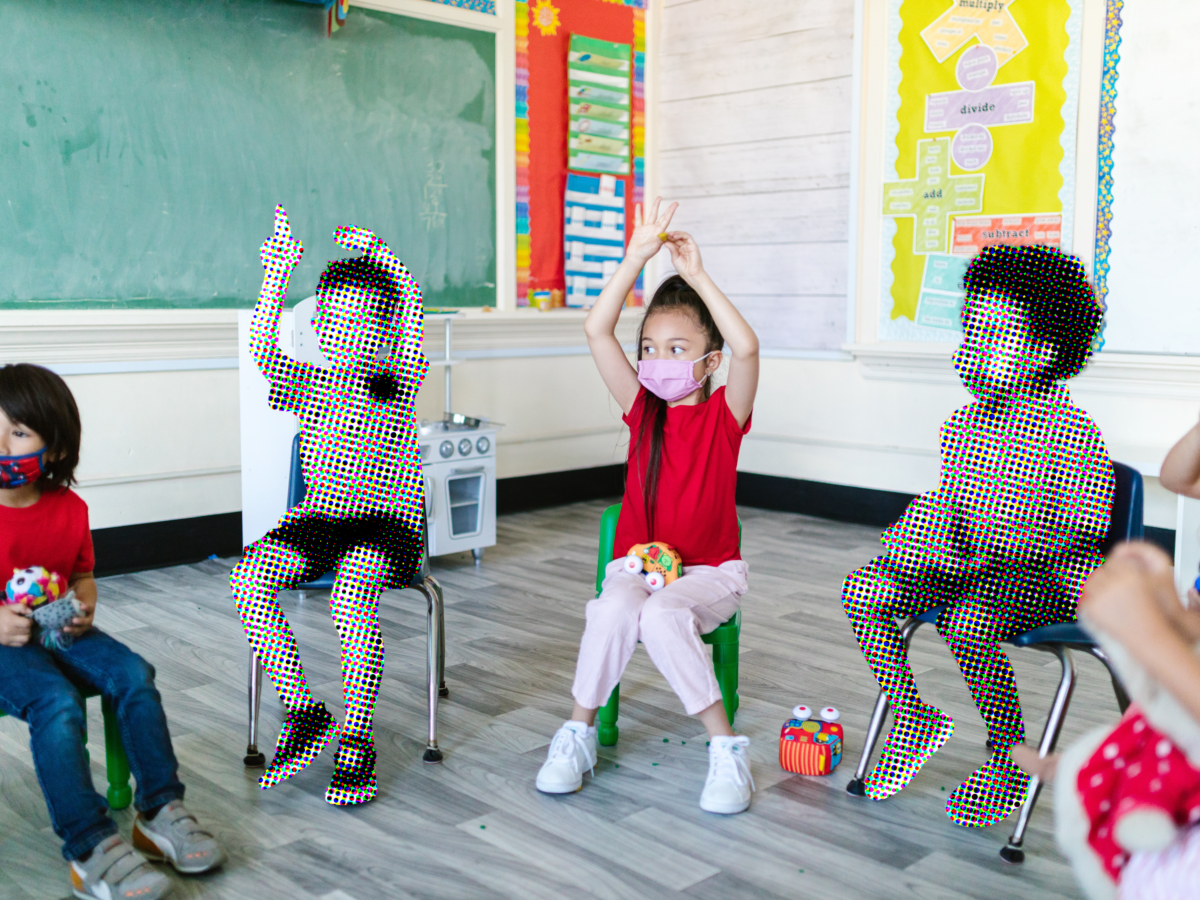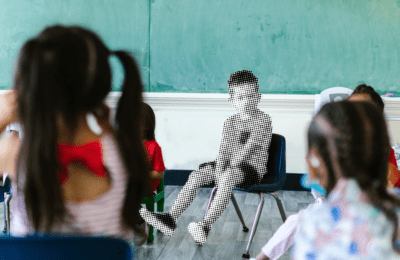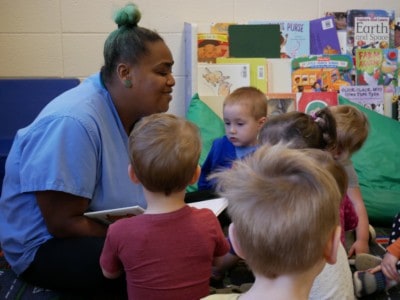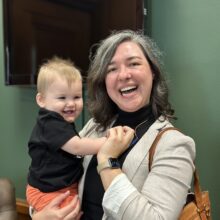
|
|
Research clearly indicates that exclusionary discipline — practices that remove children from their usual learning and social settings, such as suspension and expulsion — are harmful to preschool students. Because the first three years of brain development are the most crucial, the negative effects of exclusionary discipline, including poor educational outcomes and increased risk of incarceration, can last a lifetime.
EdNC interviewed experts on early childhood development and education to learn about possible alternatives to exclusionary discipline, including policy changes that could help.
We don’t know how many pre-K students are subject to exclusionary discipline for their behaviors, but there is clear evidence that it disproportionately affects Black children and students with learning differences.
“Most of the things that we’re talking about are really benign behaviors, under better conditions and less stress,” said Iheoma Iruka, founding director of the Equity Research Action Coalition at the Frank Porter Graham Child Development Institute, in an interview with EdNC. “They’re being kids, and the way they [are] interpreted maybe needs to be adjusted.”
Banning suspensions and expulsions
North Carolina should start by banning suspensions and expulsions for young children, the experts we talked with agreed. But they were adamant that policy change should not stop there.
“You’d like to say the policy solution is just we should ban it,” said Paul Lanier, an associate professor in the School of Social Work at UNC-Chapel Hill. “But if there are not supports in the classroom, the kids are going to suffer unless you’ve addressed the cause of the problem, not just the symptom.”
Lanier pointed out that there’s already precedent for a ban on expulsions for young students. Head Start has prohibited the practice since 2016.
Morgan Forrester Ray, director of the EarlyWell Initiative at NC Child, also supports a ban. But not without other reforms in place.
“I don’t personally see the value in [a ban] until we actually build the infrastructure and system for what childcare providers can do when they are experiencing [student misbehavior],” Ray said. “Just because we have a policy that you can’t expel doesn’t mean that the actual behaviors and challenges go away.”
Iruka put it this way: “Banning it is not just going to magically change everything. Let’s make sure that we’re providing the full conditions for teachers to thrive, for children to thrive.”
Supporting teachers
Evidence indicates that what young children need to thrive is the focused attention of a caring adult. Teachers and providers in early care and education settings are ideally situated to provide that because of the time they spend with children during their most critical years of brain development.
The experts we spoke with agreed that these relationships can happen only when child care workers are paid family-sustaining wages and given the time to engage in ongoing professional development and reflective practices.
“We probably first of all need to pay the educators,” Iruka said. “We’re asking them to build brains, build minds, and we’re paying them less than $15 an hour.”
“Our financing systems aren’t aligned,” Lanier said. “Child care is not valued in our society.”
In addition to family-sustaining wages, Iruka pointed to benefits such as health insurance and paid family leave as ways to let educators know society honors and values what they provide.
Without the services provided in early care and education settings, many parents could not participate in the workforce. A study by the U.S. Chamber of Commerce Foundation estimates that lack of child care has led to billions of dollars in lost economic impact — and that was in just five states.
The low pay for demanding work is one factor that has led to a shortage of child care providers across the nation. And the shortage means that providers are stretched thin and typically don’t have time to engage in continuous education.
Such continuous education is one of the best practices that experts highlighted when asked about alternatives to preschool suspensions and expulsions. In North Carolina, the Healthy Social Behaviors (HSB) project provides ongoing technical assistance, coaching, and training for licensed child care centers serving children from birth to age 5.
Led by Smokie Brawley, the statewide project manager, HSB uses what’s known as the pyramid model as a framework for supporting teachers. The goal of the project is to promote healthy social-emotional development and reduce the expulsion rate among young children in licensed child care centers across North Carolina.
Sign up for the EdDaily to start each weekday with the top education news.
Brawley explained that the period from birth to age 5 is the most important for developing strong social-emotional competency.
“Since 2005, our implementation of the pyramid model shows that not only do children develop better social-emotional competencies when teachers are both educated and coached on how to implement those best practices,” Brawley said, “but teachers are better satisfied, better able to manage the complexities of being an early childhood education professional, and that families are happier and teachers stay longer in a classroom.”
In addition to the center-based support provided by HSB, North Carolina is piloting Infant and Early Childhood Mental Health Consultation (IECMHC), which has the added benefit of being available to home-based child care providers.
North Carolina is one of 14 states and tribes receiving support from the Georgetown Center of Excellence, and one of the first 10 states to participate in the ZERO TO THREE Infant and Early Childhood Mental Health Financing Policy Project.
Ray of NC Child serves on the Infant and Early Childhood Mental Health Work Group, which is working to develop a statewide system of IECMHC.
“It’s basically a system that a child care provider can call to get help, a hotline,” Ray said. “They describe their struggle with the child’s behavior. And they’re actually talking to a trained clinician who can help them problem-solve or troubleshoot. Then that clinician, if additional supports are needed, can figure out how to connect them.”
There’s significant evidence that this type of consultation improves the social-emotional wellbeing of students, reducing the likelihood that they’ll face exclusionary discipline.
Affirming students and families
Experts say another way to reduce the use of exclusionary discipline is to provide young children with more affirming experiences. Affirming experiences in early childhood act as a protective factor as children grow into adulthood. Essentially, when trusted adults make a child feel good about various aspects of their identity, the child is more likely to experience positive outcomes and less likely to experience negative ones — including those correlated with exclusionary discipline.
Affirming students’ racial identities is particularly important for combating the disproportionate impact of exclusionary discipline on Black children.
Experts say that to do this well means understanding how institutional racism functions in educational systems, including through individual implicit bias.
“We have to look at our biases,” said Ebonyse Mead, a clinical instructor for birth to kindergarten at Georgia Southern University, in an interview with EdNC. “That’s important, but we need to go beyond that to help teachers see the humanity in Black children. And help Black children see the humanity in themselves. Seeing the humanity in Black children means affirming their identity, giving them agency, giving space for their voices.”
Mead stressed that a one-time workshop is not sufficient to put affirming practices into a classroom full-time. She pointed to the origins of racial identity in America, how the concept of whiteness emerged at the same time as anti-Blackness, and how that framework has harmed everyone.
“White supremacy culture robs white people of their humanity and robs people of color of their dignity,” Mead said. “We have to talk about healing.”
“[Educators] need continuous training and coaching, where they can really be intentional about deconstructing whiteness in education, understanding how anti-Blackness shows up in the learning environment, in the interactions that teachers have with the children in their care,” Mead said.
Both Mead and Iruka said building relationships with the families of the children in their care is one important way educators can affirm the identities of young children and facilitate the racial healing. Educators can better understand the context of their students’ experiences and integrate that understanding into their classroom practices.
“Families are the experts of their children,” Mead said.
Recommended reading




